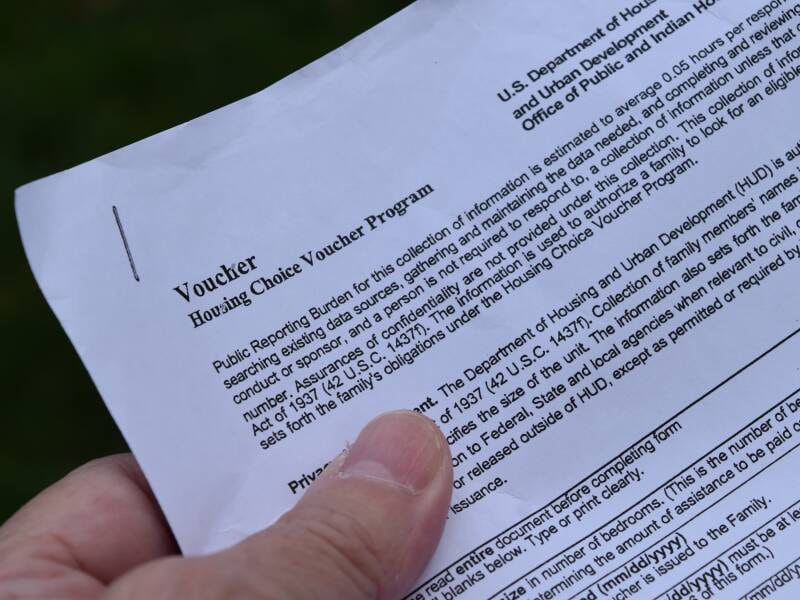Leasing property to Section 8 tenants, those who receive government assistance in the form of housing vouchers is a decision that carries both advantages and disadvantages for landlords. In this discussion, we will explore the key pros and cons of entering into rental agreements with Section 8 tenants, helping landlords make informed decisions about their rental properties.
Pros of Leasing to Section 8 Tenants
Guaranteed Rent Payments
Leasing to Section 8 tenants provides landlords with a reliable income stream through guaranteed rent payments. This advantage stems from direct government subsidies covering a portion of the tenant's rent. The assurance of timely payments enhances financial stability for landlords, making it an appealing option. The government's involvement in subsidizing rent acts as a safeguard, ensuring consistent income and alleviating concerns about payment uncertainties, making Section 8 leasing a secure and attractive choice for property owners.

Wider Pool of Potential Tenants
Engaging in the Section 8 program broadens the range of potential tenants for a property, enhancing the chances of securing suitable occupants. By accepting government-subsidized housing vouchers, landlords tap into a more extensive pool of eligible renters, which proves advantageous in highly competitive rental markets. This approach increases flexibility for property owners and fosters a mutually beneficial arrangement, addressing housing needs while navigating market challenges.
Reduced Vacancy Rates
The Section 8 program addresses the high demand for affordable housing by stabilizing occupancy for landlords. With a limited supply of affordable housing, participating landlords experience reduced vacancy rates. This program's implementation creates a more stable and consistent occupancy, benefitting both landlords and tenants. By bridging the gap between demand and supply, Section 8 contributes to the overall goal of ensuring accessible housing options, promoting stability in housing markets, and addressing the critical issue of homelessness.
Property Inspections and Maintenance
Section 8 properties undergo regular inspections to ensure they meet housing quality standards. These inspections act as a safeguard, promoting diligent maintenance and upkeep. Landlords benefit from the assurance that their property is well-maintained, preserving its value over time. This aspect of Section 8 arrangements fosters a mutually beneficial relationship, as it encourages a higher standard of property care while providing stable housing for tenants.
Stable Rental Income During Economic Downturns
Unlike traditional rentals vulnerable to market fluctuations, Section 8 landlords receive government assistance that acts as a financial buffer. This stability shields them from substantial financial losses during challenging economic times, providing a reliable income source. The consistent support from government programs creates a sense of financial security for landlords, making Section 8 arrangements an attractive option for those seeking resilience against the uncertainties of the rental market during economic downturns.
Pros of Leasing to Section 8 Tenants
Government Bureaucracy and Paperwork

Landlords engaging in the program must navigate a maze of regulations, creating a time-consuming administrative burden. The intricate process of complying with government requirements may deter some landlords, as the substantial paperwork demands can be overwhelming. This bureaucratic aspect introduces a notable con for those seeking a streamlined and less complex rental management experience, potentially outweighing the benefits of participating in the Section 8 program.
Rent Caps
One drawback of leasing to Section 8 tenants lies in the imposition of rent caps, tethered to local market rates. Landlords may find their ability to charge market-rate rents restricted, limiting potential rental income. This constraint poses a significant disadvantage for property owners seeking to maximize profitability, as they are constrained by predetermined rental limits. The inability to align rents with current market conditions may dissuade some landlords, compromising their financial flexibility and impeding their capacity to capitalize on the full rental value of their properties.
Limited Control Over Tenant Selection
Mandated by the program to prevent income-based discrimination, landlords find their influence in the tenant selection process curtailed. This loss of control raises concerns for property owners who value the ability to choose tenants based on various criteria. The inability to exercise full discretion in selection may lead to mismatched expectations or compatibility issues, as landlords are constrained by program guidelines. Balancing the commitment to fair housing practices with a desire for more personalized tenant selection becomes a challenge in Section 8 arrangements.
Property Wear and Tear

Landlords raise concerns about property wear and tear, as their lower personal investment may result in increased maintenance needs. Landlords may face additional costs to uphold the property's condition, as Section 8 tenants might not prioritize upkeep to the same extent as those with a stronger financial stake. This potential disparity in responsibility underscores a con for landlords, necessitating a proactive approach to maintenance and repair to preserve the property's value and minimize the impact of increased wear and tear.
Related: What If My Section 8 Inspection Failed Twice?
Stigma and Misconceptions
Some landlords may encounter stigma or misconceptions associated with Section 8 tenants, leading to potential biases or prejudices. Overcoming these perceptions may require proactive communication and education.
The bottom line
For real estate investors, whether newcomers or seasoned, contemplating Section 8 tenancy is common. Before deciding, it's crucial to understand the pros and cons associated with renting to this niche. Armed with this knowledge, investors, alongside property managers, can evaluate whether the benefits outweigh the drawbacks in their specific situation. Opting for Section 8 can mean providing secure housing for families in need, emphasizing the significance of informed decision-making based on individual circumstances and a clear understanding of the potential advantages and challenges associated with this housing program.





